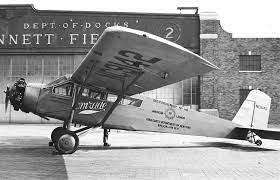Airports that were once bustling but are now deserted and empty have a particularly unsettling vibe. As air travel has developed quickly over the years, several opulent hubs from the heyday of flight have found themselves unable to keep up with the rapid rise in passenger numbers and new technological advancements. A few never got off the ground at all, while others were supplanted by larger airports or were the victims of unavoidable events.
Croydon Airport, England, UK
Croydon Airport opened in 1920 as the UK’s first international airport, with Handley Page and Imperial Airways (later British Airways) transporting a jet-set crowd across Europe and to Asia and Australia on luxury craft with afternoon tea and cocktails. A roster of firsts includes the UK’s first customs, the first air traffic control and Amy Johnson’s groundbreaking solo flight from the UK to Australia in 1930. Passenger numbers rose from 2,000 in the first year to nearly 132,000 in 1936, and the airport handled the majority of the UK’s air mail and cargo.
Croydon Airport, England, UK
A new terminal added in 1928 was the biggest in the world at the time but, after significant bomb damage during the Second World War, attempts to expand it proved problematic and Croydon Airport simply wasn’t big enough to keep up with growing air traffic. Heathrow opened in 1946 and became London’s primary airport, with Croydon eventually closing in 1959.
Its Neoclassical-style buildings have since housed commercial operations and business centres, while the airport’s main terminal remains a popular attraction thanks to its importance to aviation history. The iconic control tower, which was the world’s first, is the standout star, while a tiny, volunteer-run museum pays homage to the airport’s extraordinary past.
Montreal Mirabel Airport, Montreal, Canada
White elephants don’t come much bigger – or more expensive – than this stomping beast. Montreal Mirabel Airport opened in 1975 as part of the city’s preparations for hosting the Olympic Games the following year. It was set to replace Dorval Airport as the main route into the region and, as one of the world’s biggest airports, opened with loud fanfare and (initially) streams of passengers as people arrived for the games.
But its location, far from downtown, quickly caused issues. The planned high-speed rail line failed to materialise, meaning journeys into the city took well over an hour. Domestic flights continued to land at Dorval, which caused more logistical nightmares for those with connecting flights. These infrastructure issues meant few were prepared to pay to fly from the out-of-town location, passenger numbers plummeted and Dorval (now Montreal-Trudeau International Airport) reopened to international routes in 1997.
The last passenger flight, an Air Transat route to London, departed in 2004 and the airport became a testing ground, cargo route and filming location – Tom Hanks’ 2004 movie The Terminal was shot here. Plans to turn it into a theme park were eventually abandoned just like the airport, and the passenger terminal was demolished in 2014.
Tegel Airport, Berlin, Germany
What became Berlin’s main international airport was built on land once destined for allotments. Until Soviet leader Joseph Stalin ordered a blockade in Berlin in June 1948, forcing Allied forces to act quickly. French authorities in the Tegel district ordered the speedy construction of an 8,202-foot (2,500m) runway that could be used to bring in emergency supplies, with the first plane touching base that November. It was part of the Berlin Airlift, bringing food and coal to the city and lifting children to safe zones until the blockade ended in May 1949.
It became one of the city’s main commercial airports and was a hub for glamorous airline Pan Am in the 1950s. But it struggled to keep up with demand and, when Tegel’s new terminal opened in the 1970s, operations at Tempelhof were suspended. It reopened after the fall of the Berlin Wall but eventually closed in November 2008.
Tempelhof now stands as an unusual and rather chequered historical monument. The Nazi-era terminal, with curved roof, remains intact with the pockmarks of bullet holes, while basements used as bomb shelters are adorned with whimsical paintings designed to distract children from what was happening outside. Its grounds have been reopened as a public park, Tempelhof Field, with tours of its buildings and events from fashion shows to raves. The enormous site is also a popular filming location for Second World War movies.
Robert Mueller Municipal Airport, Austin, Texas, USA
Robert Mueller Municipal Airport opened in 1928 as Austin’s first airport for civilian air travel. City authorities asked the army based at Kelly Field in San Antonio to fly overhead and locate a suitable spot. The site, disused farmland a few miles from downtown, was chosen by pilot Claire Chennault, who later became famous with the 'Flying Tigers' of the Second World War. It was named after a city council member who died while in service, and its design – especially the steel-trussed control tower – won awards.
American and United Airlines both operated from Robert Mueller. As Austin’s popularity soared and the city became a tech hub, the airport was unable to meet demand. Rapid urban growth also meant that it ended up surrounded by new neighbourhoods and residential areas. It eventually closed in 1999, replaced by shiny new Austin Bergstrom International Airport – which, at more than 4,000 acres compared to the old airport’s 700, has a far bigger capacity.
The old airport remains part of the city’s fabric, though. In 2007, construction began on Mueller, a huge mixed-use 'urban village' and sustainable, self-contained community on the site of the airport, with green spaces, homes, office spaces, shops and restaurants. The old control tower remains as a landmark in the new neighbourhood, while the old hangar is at the heart of Lake Park.
Yasser Arafat International Airport, Gaza
The then-US president Bill Clinton attended the opening ceremony of Yasser Arafat International Airport, also known as Gaza International Airport, when it officially opened in late 1998. It was to be a major international airport serving the city of Rafah in the Gaza Strip and the surrounding areas, and was completed with international funding. For the first few years it saw around 700,000 annual passengers.
But its operation was short-lived. The £63.8 million ($86m) airport, which was named in honour of Palestinian leader Yasser Arafat, was targeted by an Israeli bombing campaign during the al-Aqsa Intifada or Second Intifada, a Palestinian uprising against Israel in 2000. The air traffic control tower, runway and the terminal building were severely damaged. Shortly afterwards the remains of the airport were pretty much flattened by bulldozers.
Ciudad Real Central Airport, Spain
The ghost airport remains mothballed and its structures stand in the middle of nowhere like a herd of white elephants. They include a huge car park and a partially completed walkway connecting the airport to a train station that was supposed to be part of the Madrid to Seville high-speed rail line, which itself was never completed. It was bought in 2016 by CR International Airport SL with plans to revive it as a commercial airport, but it spent most of the pandemic as a plane storage facility.
Kai Tak International, Hong Kong
Crowds turned out to gawp at and photograph the planes in the days before the airport closed, standing on rooftops and bridges to watch the craft skim close to the buildings one last time. The old airport was transformed into a cruise terminal that opened in 2013, with the aim of transforming the city into the region’s biggest cruise hub.








.svg)


